NetSuite has long been appreciated by its customers for strong analytical tools such as Dashboard Reports Snapshots, Saved Search Portlets, KPI Scorecards and many others. An often overlooked and underutilized analytical tool is the sublist.
Standard sublists can be seen all over the NetSuite application, from Opportunities and Items Purchased under the Sales tab of a customer record to Vendors and Locations found under the Inventory tab of an item record.
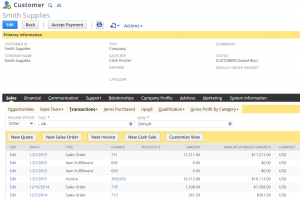

But, it’s not obvious to the average user or even an administrator that NetSuite supports the creation and usage of custom sublists. In addition, for those that do know about custom sublists, it is not obvious how to create and leverage them on Entity, Item, Transaction and CRM records.
The goal of this post is to unravel the mystery of sublists and show some practical examples that you may be able to leverage immediately within your organization to improve analytics and decision-making on a daily basis.
Let’s first start out with an example of a transaction-based sublist. Company XYZ is a distributor of auto accessories and when their customer service reps create a new sales order for a customer they want immediate access to a list or previously-ordered items by that customer. This allows the Customer Service Representative to better understand their buying patterns and potentially up-sell or cross-sell them other products to increase revenue.
Using a transaction sublist tied to a saved search, the Customer Service Representative now has this information at their fingertips without having to open a new tab and view the customer record or run an Items by Customer report.
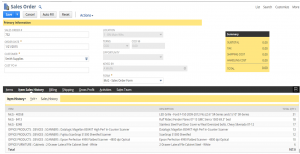
In addition to the Item History sublist information, other sublists can be made available under the same subtab to show a customer YTD sales performance compared to the same time last year (YoY) and their invoice history (Sales History), just to list a couple of examples.
The steps for creating a sublist and surfacing it on an entity, item, transaction, or CRM record are as follows:
- Create a new custom subtab for your sublist to display under. (Our EX: Item/Sales History)
- Customization –> Forms –> Subtabs
- Create a new Saved Search based on the information needed to show in the sublist. For the Item History example, it will be a transaction saved search.
- Specify your search criteria as shown below

- Specify your result columns as shown below.
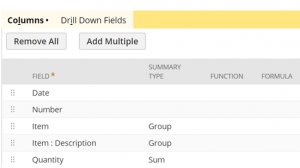
- And now, the most important aspect of the saved search as it pertains to sublists. You must set a filter that represents the entity or transaction key value. In this example, for each sales order we only want the item history for that customer to show in the sublist, so we are using the Name field on the transaction to filter the data accurately.
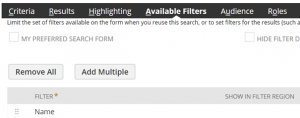
- Next, create your new sublist
- Customization –> Forms –> Sublists
- Choose the tab that represents the record type that the sublist will be associated to. (Our EX: Transaction)
- Select your new transaction saved search in the Search dropdown
- Type in a name for the sublist that will show under the subtab you choose next
- Choose the subtab you created in step 1 in the Tab dropdown field.
- Select one or more transaction types to associate your sublist to. (Our EX: Sale)
- Lastly, and most importantly, in the column labeled “Field”, select the field on the form that should be used to filter the saved search results. (Our EX: Customer, on the Sales Order)

A couple of other ideas for sublists are:
Customer Gross Profit by Item Category
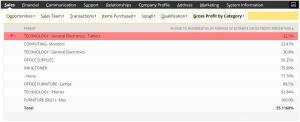
Customer back orders for a particular item
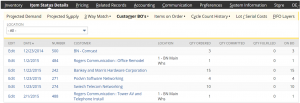
If you have any customization needs, including the creation of sublists, the NetSuite professionals at RSM can help. We are a NetSuite Solution Provider and a NetSuite Systems Integrator partner, and have more than 30 years experience implementing ERP solutions. We’ll provide you with industry insight, project management and the technical resources you need to make your project a success.
By: Gary Leitner – Colorado NetSuite Solution Provider

 RSMUS.com
RSMUS.com